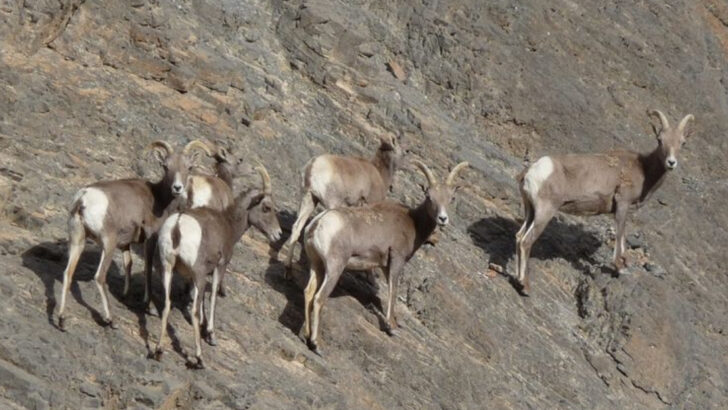Death Valley isn’t just sand, salt, and sunburns—it’s alive.
This scorched wilderness hides creatures that defy logic.
Animals that endure 120°F heat.
That sprint across cracked earth.
That vanish into shadows the second you blink.
You won’t find them lounging on trails or posing for selfies.
Nope.
These survivors play hard to get.
And that makes spotting them feel like discovering buried treasure.
From sleek predators to sneaky reptiles and ghost-like birds, Death Valley holds a secret cast of wild residents.
Want to find them?
You’ll need patience, luck… and maybe a little madness.
Let’s see who’s out there.
Desert Bighorn Sheep
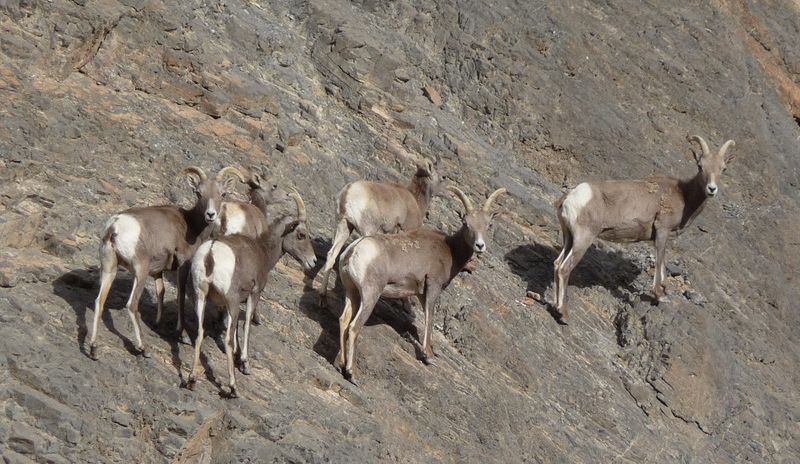
With their mighty horns and surefooted grace, Desert Bighorn Sheep are icons of the rugged wilderness. These sheep traverse steep, rocky inclines with ease, a testament to their extraordinary agility and strength. In spring, you can often see lambs frolicking alongside their mothers, learning the ropes of survival. Their tawny coats blend seamlessly with the desert backdrop, making them challenging to spot from a distance. Did you know that their thick skulls enable them to withstand powerful clashes during mating battles? Encountering these resilient creatures is a truly breathtaking experience in the heart of Death Valley.
Coyote
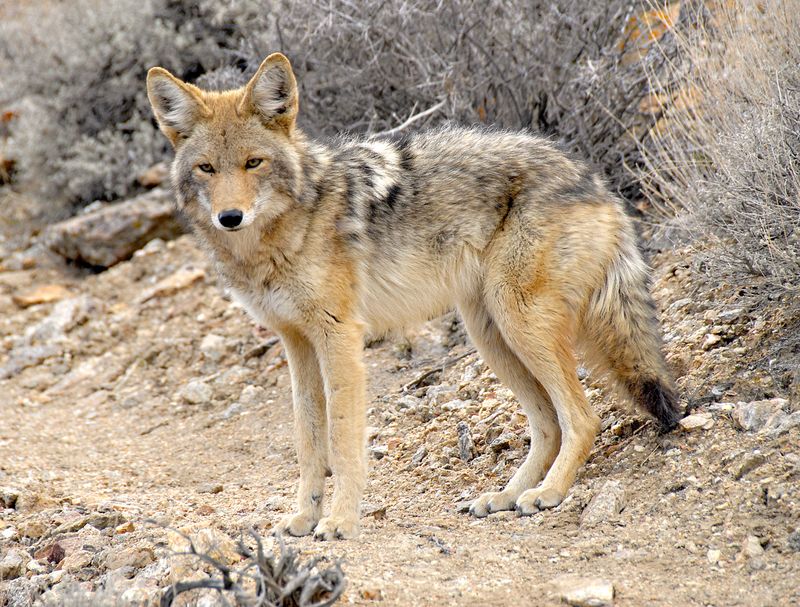
Sly and resourceful, the coyote is a master of adaptation. Whether hunting alone or in packs, these intelligent creatures are often spotted searching for food at dawn or dusk. Coyotes have a varied diet, feasting on small mammals, reptiles, and even fruits. Their distinct howls echo through the valleys at night, a haunting yet beautiful symphony of the wild. In Native American folklore, the coyote often symbolizes craftiness and survival. Keep an eye out in open plains and near water sources to catch a glimpse of this enigmatic predator.
Roadrunner
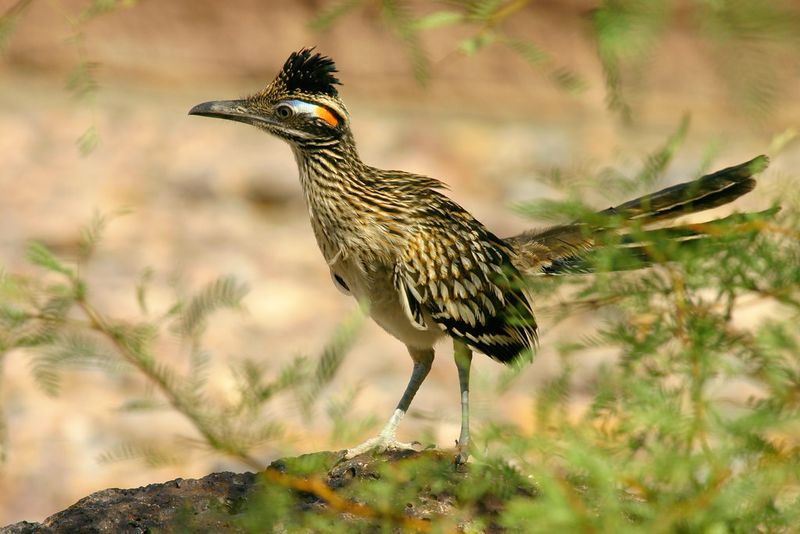
Zipping across the desert floor with astonishing speed, the roadrunner is a bird full of surprises. Famous for its role in cartoons, this bird is actually a formidable predator, hunting insects, lizards, and even small snakes. With its long tail and distinctive crest, the roadrunner’s appearance is as striking as its agility. Native to the Southwest, it thrives in hot climates, making Death Valley an ideal home. Its ability to conserve moisture and regulate body temperature is key to its survival. Spotting a roadrunner in action is a delight for any visitor.
Kit Fox
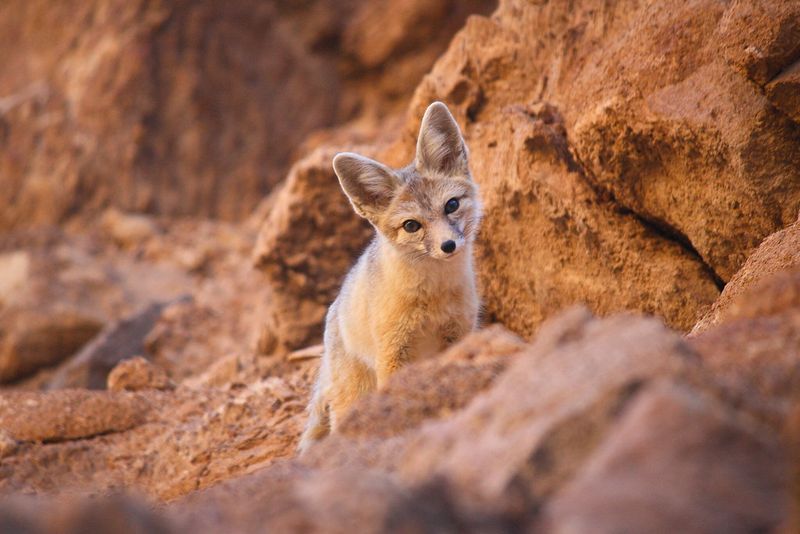
Delicate yet daring, the kit fox is the smallest canine in North America. With oversized ears and a bushy tail, it is perfectly adapted to the desert environment. Often seen during the cooler hours of dawn and dusk, kit foxes hunt small mammals and insects. Their keen senses and slender bodies allow them to navigate their arid habitat with ease. A fascinating fact: kit foxes rarely need to drink water, obtaining moisture from their prey. Observing a kit fox as it stealthily moves through the sands is a mesmerizing experience, capturing the essence of desert life.
Chuckwalla Lizard
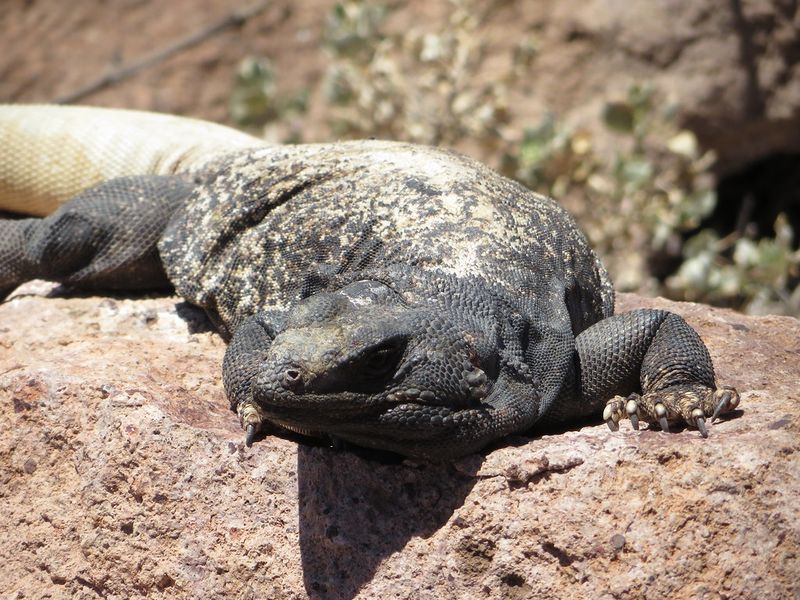
With its robust body and loose skin, the chuckwalla lizard is a master of desert survival. These herbivorous reptiles are often found basking on sun-drenched rocks, soaking up the warmth essential for their survival. When threatened, chuckwallas will wedge themselves into crevices, puffing up to deter predators. Their diet consists mainly of desert plants, which provide hydration and nutrients. Interestingly, they can change color to regulate body temperature, appearing darker in cooler weather. Spotting a chuckwalla is like encountering a living relic of the desert’s ancient past, a reminder of nature’s incredible adaptability.
Desert Tortoise
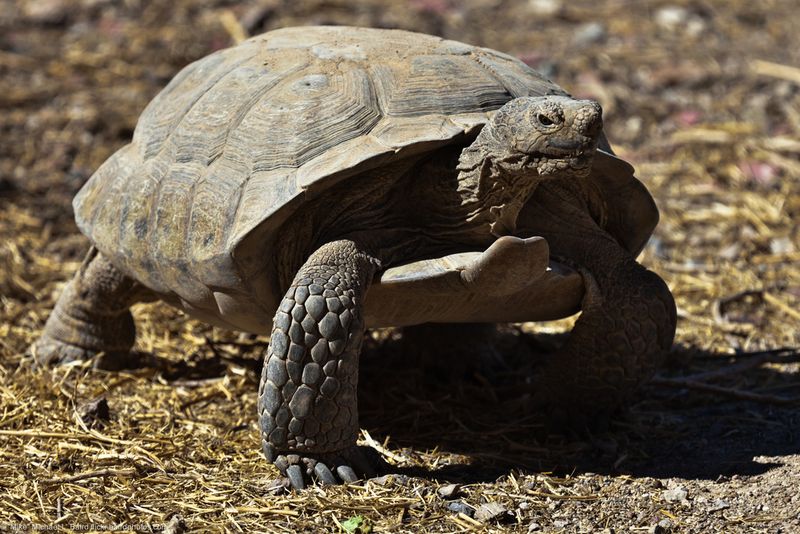
The desert tortoise, with its wise demeanor and slow-moving gait, is a true survivor. Endemic to the Mojave and Sonoran Deserts, it has adapted to endure extreme heat and scarce water. During the hottest months, desert tortoises retreat to burrows, conserving moisture and energy. Their diet of grasses and wildflowers is supplemented by rainwater, collected in specialized reservoirs within their bodies. Surprisingly, they can live for over 80 years in the wild. Encountering a desert tortoise offers a glimpse into the resilience and beauty of life in one of Earth’s most challenging environments.
Golden Eagle
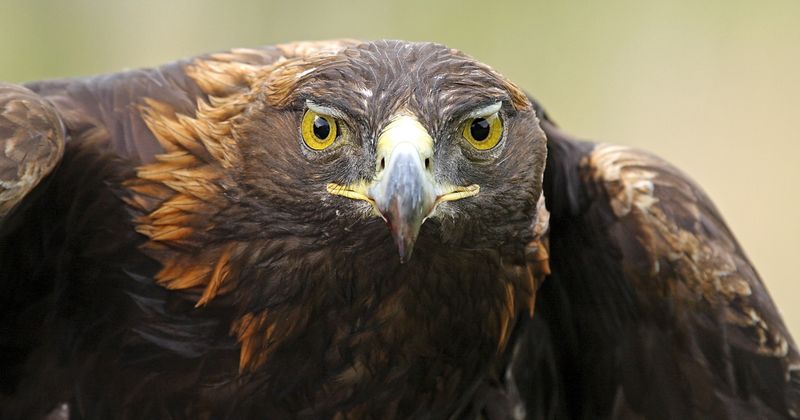
With wings spanning over six feet, the golden eagle is a master of the skies. This powerful raptor can be seen soaring above Death Valley, hunting for prey with its extraordinary vision. Golden eagles prey on small mammals and occasionally other birds, showcasing their prowess as apex predators. Their nests, called eyries, are often built on cliffs or high trees, offering a panoramic view of the landscape. Known for their strength and grace, golden eagles hold a revered place in Native American culture. Watching one glide effortlessly through the sky is an awe-inspiring experience.
Western Diamondback Rattlesnake
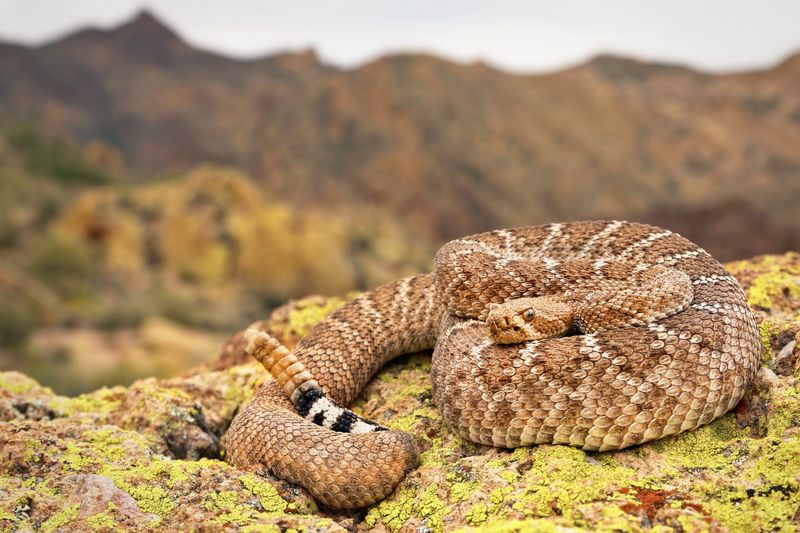
The western diamondback rattlesnake is as fascinating as it is formidable. Known for its distinctive diamond pattern and signature rattle, this snake is a symbol of the desert’s untamed beauty. Although venomous, rattlesnakes are generally non-aggressive and avoid humans. When threatened, they give a warning rattle before striking. Inhabiting rocky areas and open deserts, they control rodent populations, playing a vital ecological role. Their heat-sensing pits allow them to hunt nocturnally, a crucial adaptation in Death Valley’s extreme environment. Spotting this elusive predator requires caution but offers a thrilling look at nature’s raw power.
Pallid Bat
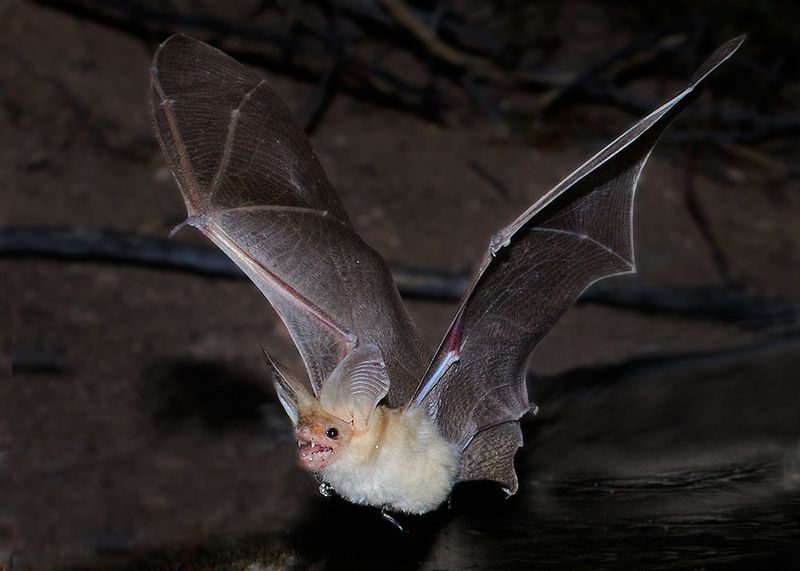
Nocturnal and mysterious, the pallid bat emerges at dusk, its gentle fluttering a contrast to the harsh desert landscape. With pale fur and oversized ears, this bat is specialized for life in arid regions. It feeds on insects and small vertebrates, often catching prey on the ground. Remarkably, pallid bats are immune to scorpion venom, one of their favored meals. Roosting in rock crevices or abandoned mines, they are elusive yet fascinating creatures. Observing a pallid bat as it navigates the night sky is akin to witnessing a delicate ballet of survival and adaptation.
Mojave Rattlesnake
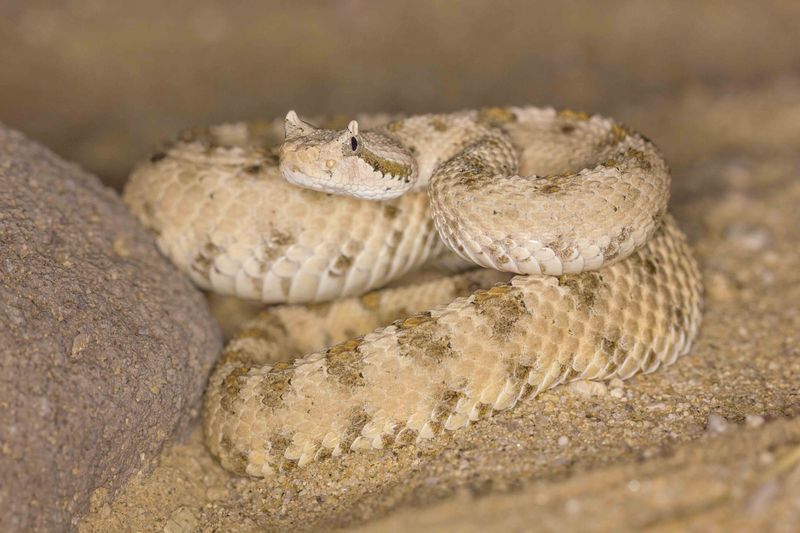
The Mojave rattlesnake, with its subdued greenish hue, is one of the most venomous snakes in North America. Yet, like many of its kind, it prefers retreat over confrontation. Found in the arid expanses of Death Valley, it uses camouflage as a primary defense mechanism. Its venom is particularly potent, a mix that affects both the nervous system and blood. Despite this, it plays a crucial role in controlling rodent populations. Observing a Mojave rattlesnake, with respect for its power and place in the ecosystem, provides insight into the delicate balance of desert life.
Greater Roadrunner
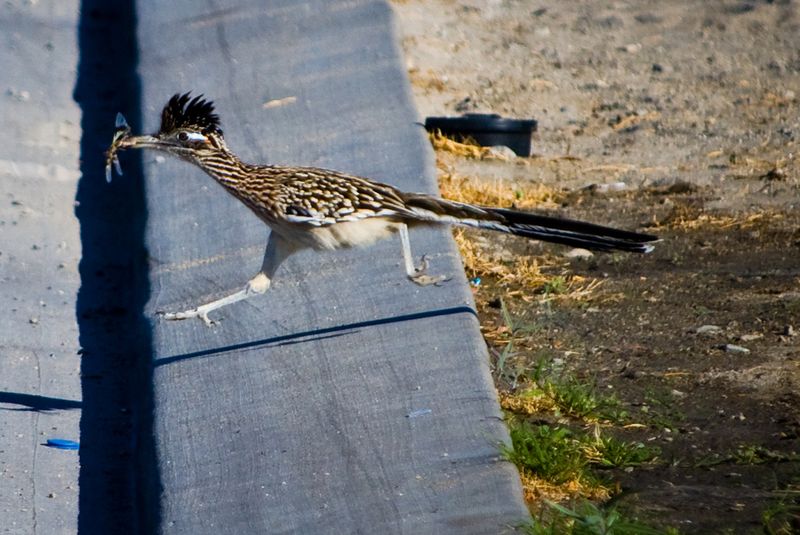
Not just a cartoon character, the greater roadrunner is a remarkable bird in its own right. Known for its incredible speed and agility, it races across the desert in pursuit of prey, which includes insects, lizards, and even small snakes. Its long legs and distinctive crest make it easily recognizable. The roadrunner’s ability to regulate its body temperature and conserve water enables it to thrive in arid environments. Observing this avian athlete in action is a captivating experience, offering a glimpse into the dynamics of desert life.
Mountain Lion
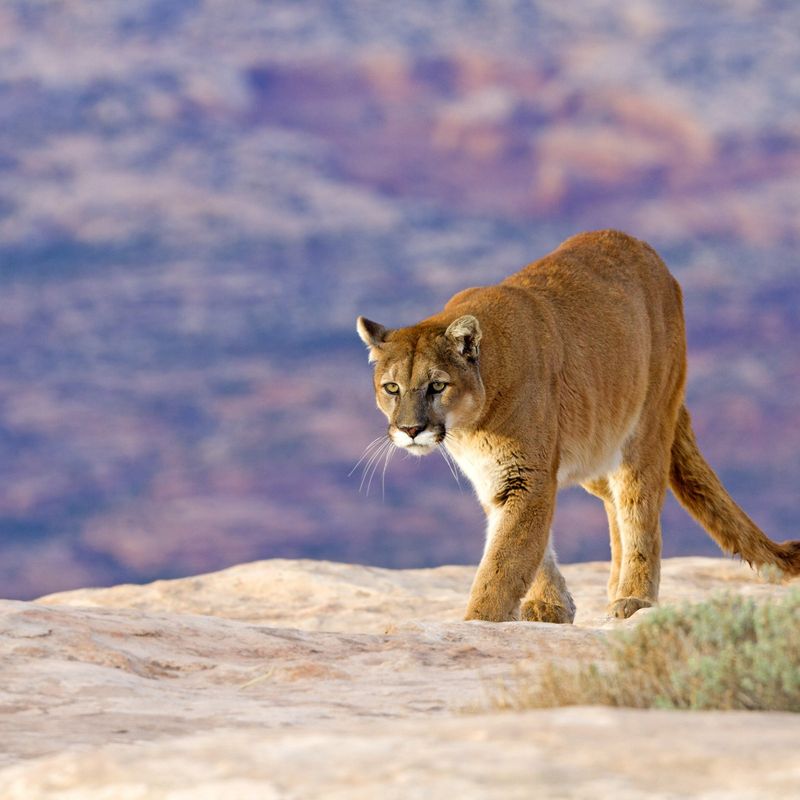
The elusive mountain lion, also known as a cougar or puma, is a symbol of wilderness and strength. With a range covering various habitats, these solitary predators are rarely seen but leave behind signs of their presence. They primarily prey on deer, requiring vast territories to support their hunting needs. Despite their size, mountain lions are adept climbers and swimmers. Encountering one in Death Valley is rare, but their presence underscores the park’s untamed nature. Their silent, graceful movement through the rugged landscape epitomizes the spirit of survival in the wild.
Burrowing Owl

With its endearing appearance and unique behaviors, the burrowing owl is a fascinating resident of Death Valley. These small owls live in burrows, often taking over those abandoned by mammals. During the day, they can be seen standing sentry near their homes, scanning for insects and small prey. Social and often living in loose colonies, burrowing owls use their long legs to sprint short distances. Their soft cooing calls add a gentle soundtrack to the desert dusk. Spotting a burrowing owl is a delightful experience, offering a window into the quirky side of desert life.
Kangaroo Rat
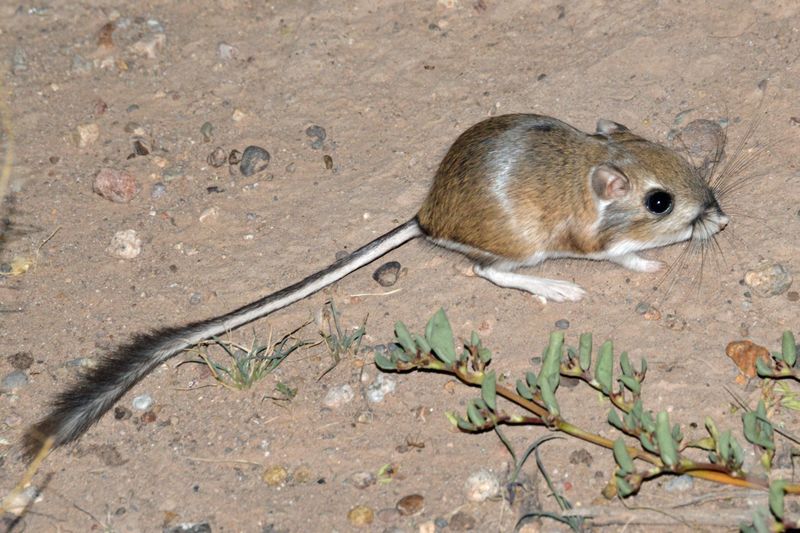
The kangaroo rat is a master of desert living, perfectly adapted to the harsh environment of Death Valley. With their long hind legs and tail, they hop like miniature kangaroos, covering ground quickly. These nocturnal rodents live in burrows, emerging at night to forage for seeds. They have an incredible ability to conserve water, extracting moisture from their food, and rarely needing to drink. The kangaroo rat’s cheek pouches, used for storing food, are a unique adaptation. Watching them dart across the sands is a testament to the ingenuity of nature’s creations in arid landscapes.
Gila Monster
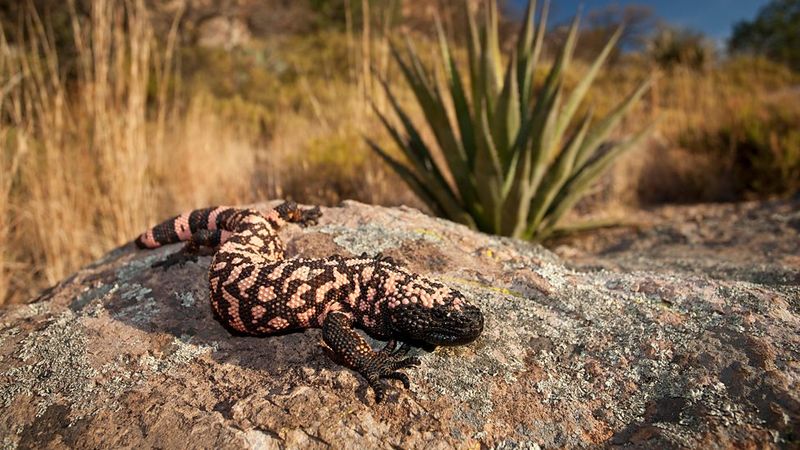
The Gila monster, with its striking black and orange patterns, is one of North America’s few venomous lizards. Slow-moving and elusive, it displays a calm demeanor until threatened. Found in the rocky deserts of Death Valley, Gila monsters feed on eggs, small mammals, and birds. Their venom, delivered through grooves in their teeth, is used primarily for defense. Despite their fearsome reputation, they are a rare sight, spending much of their time in burrows. Observing a Gila monster in its natural habitat offers a rare glimpse into the secretive world of desert reptiles.
Sidewinder
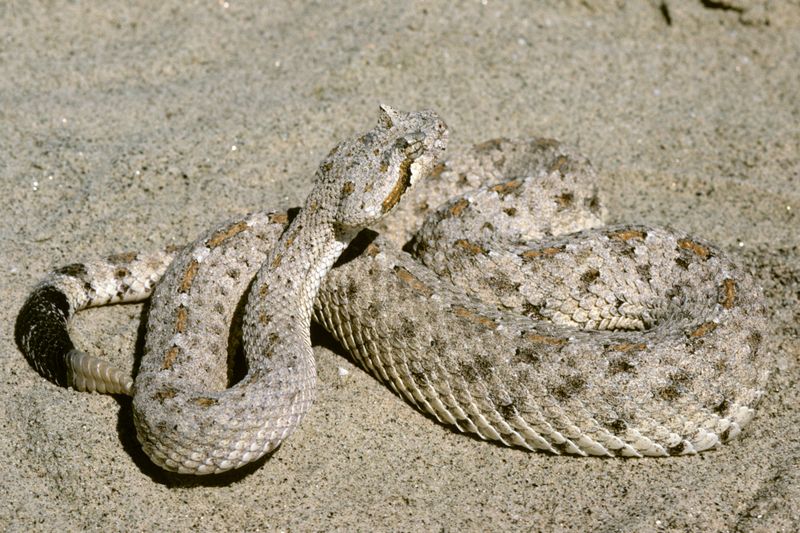
The sidewinder rattlesnake, named for its distinctive method of locomotion, is a desert icon. Moving in a sideways fashion, it leaves unique, J-shaped tracks in the sand. This adaptation allows it to move efficiently across loose substrates, avoiding overheating. Found in the sandy areas of Death Valley, sidewinders are well-camouflaged, blending with their surroundings. Their diet consists mainly of lizards and small rodents. While venomous, they are not aggressive and prefer to avoid confrontation. Watching a sidewinder in motion is like witnessing a piece of living art, perfectly adapted to its harsh environment.
Phainopepla
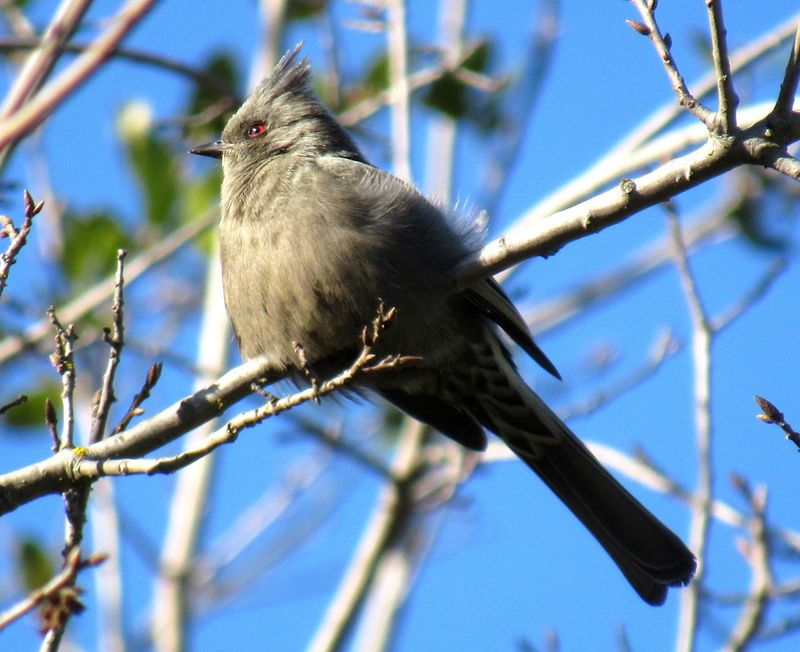
The phainopepla, with its glossy black plumage and striking red eyes, is a bird of contrast and beauty. Males are particularly eye-catching, while females sport a more subdued grey. Found in the desert scrub of Death Valley, they feed on mistletoe berries and insects. During mating season, phainopeplas perform aerial displays, showcasing their agility and grace. Their melodious song adds a musical note to the desert’s soundscape. Watching a phainopepla flit through the branches is a moment of serene beauty, highlighting the unexpected vibrancy of life in arid regions.
Harris’s Hawk
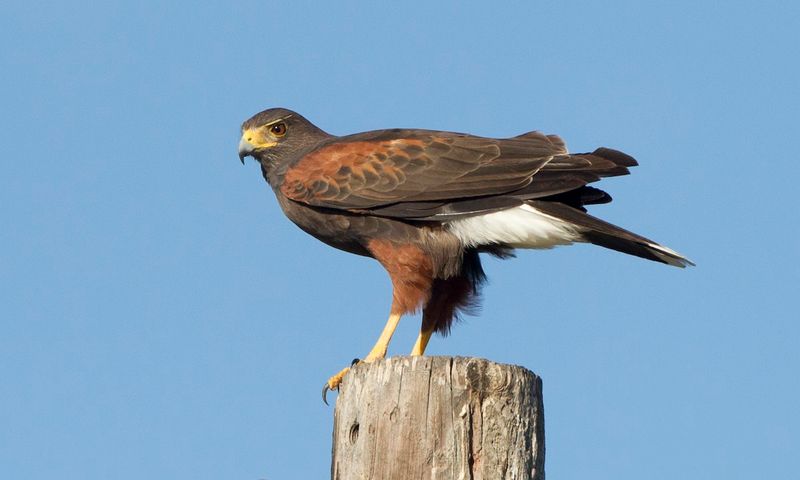
Unlike solitary raptors, Harris’s hawks are known for their unique social structure, often hunting in cooperative groups. Found in the open deserts and grasslands of Death Valley, these birds of prey exhibit remarkable teamwork. They primarily hunt small mammals and birds, using strategic coordination to flush out and capture prey. Their rich, chocolate-brown plumage and striking white tail tips make them easily identifiable. Observing a group of Harris’s hawks hunting together offers a rare glimpse into the collaborative side of predatory life, showcasing the diversity of strategies in nature’s survival toolkit.
Collared Lizard
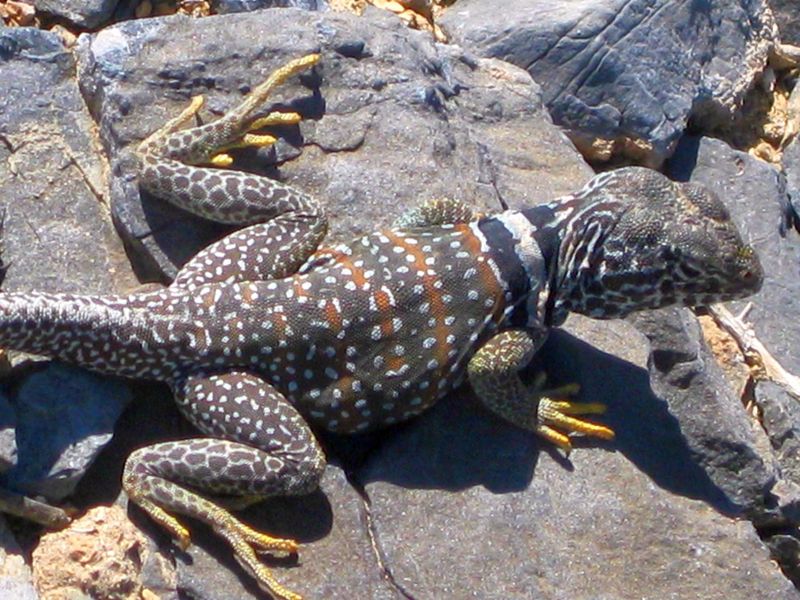
The collared lizard, with its vivid patterns and distinctive black collar, is a striking inhabitant of Death Valley. Known for their speed and agility, these lizards can run on their hind legs to escape predators. Their diet includes insects and smaller lizards, showcasing their role as agile hunters. Males display particularly vibrant colors during the mating season, adding to their allure. Observing a collared lizard in action, basking or hunting, is a vivid reminder of the dynamic life that thrives in even the harshest environments. Their presence adds a splash of color to the desert landscape.
Zebra-tailed Lizard
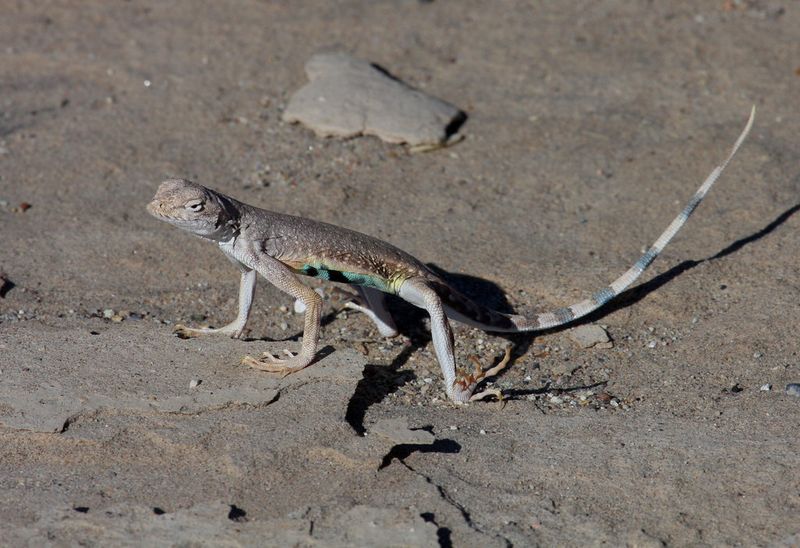
The zebra-tailed lizard, aptly named for its banded tail, is a lively creature of the desert sands. Known for their speed and agility, these lizards escape predators with swift, zig-zag movements. During the hottest parts of the day, they can be seen basking on rocks, their tails held high as a warning signal. Zebra-tailed lizards have a varied diet, consuming insects and vegetation. Their ability to thermoregulate allows them to remain active when other animals seek shade. Watching a zebra-tailed lizard dart across the sand is witnessing a master of survival in a challenging landscape.
Ringtail Cat
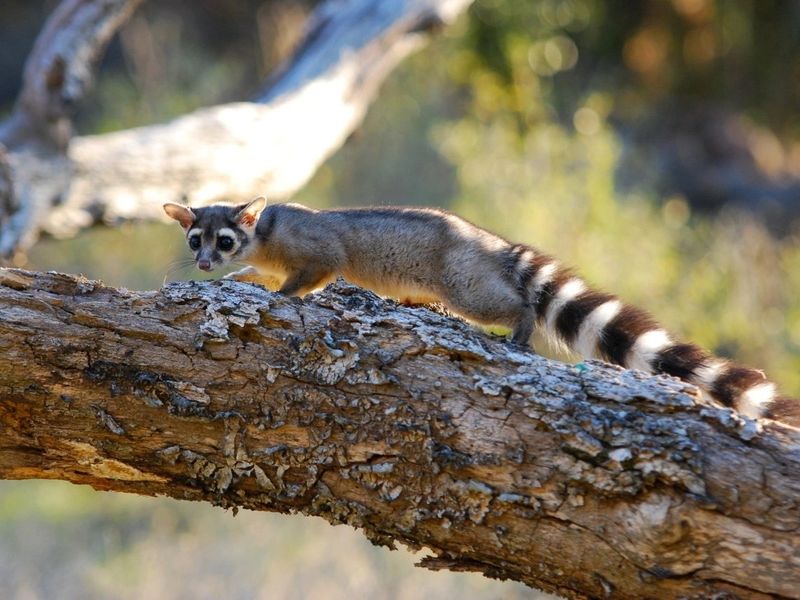
As dusk falls over Death Valley, the enigmatic ringtail cat emerges from its rocky hideaway. With large, luminous eyes and a tail adorned in black and white rings, this nocturnal creature is a master of stealth and agility.
Often mistaken for a type of raccoon, the ringtail is actually more closely related to foxes. It thrives in the park’s arid environment, navigating the rugged terrain with ease.
A skilled hunter, the ringtail feeds on insects, small mammals, and birds. Did you know these creatures were once kept by miners as “miners’ cats” for their rodent-catching prowess?

